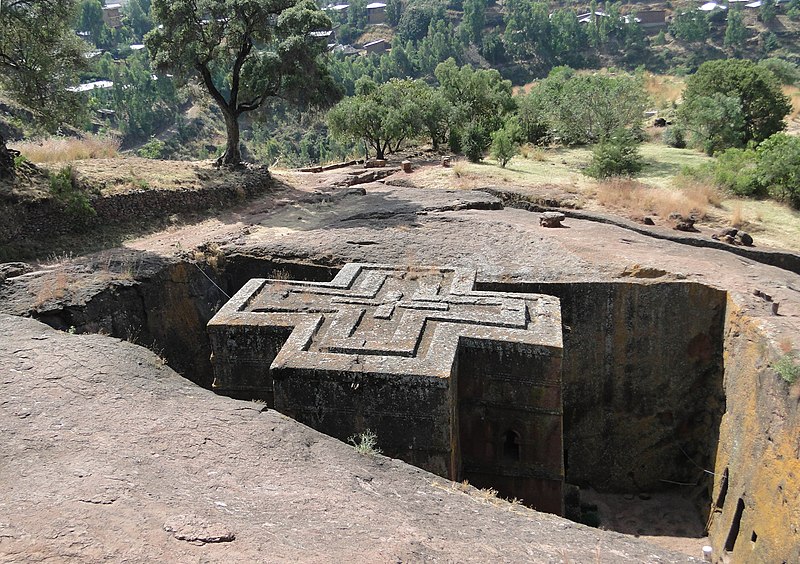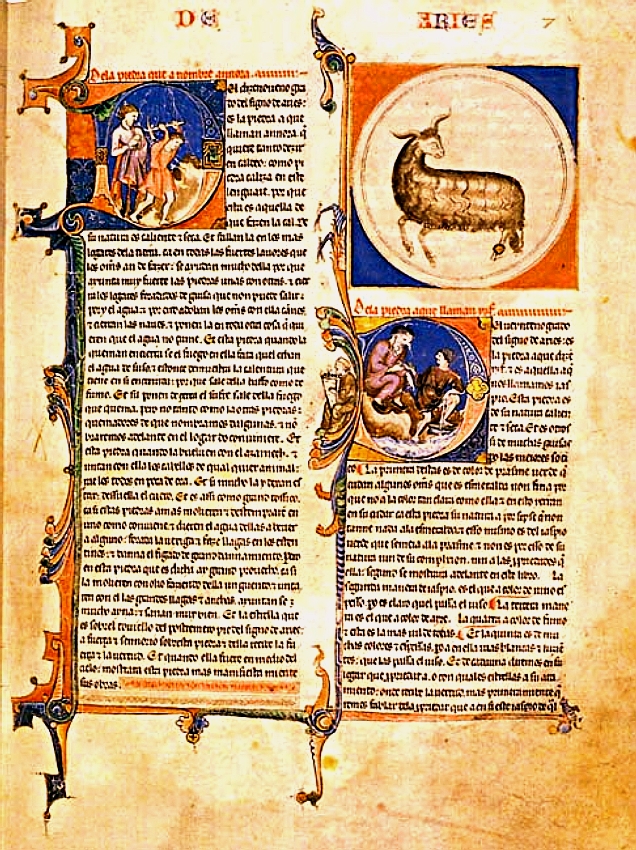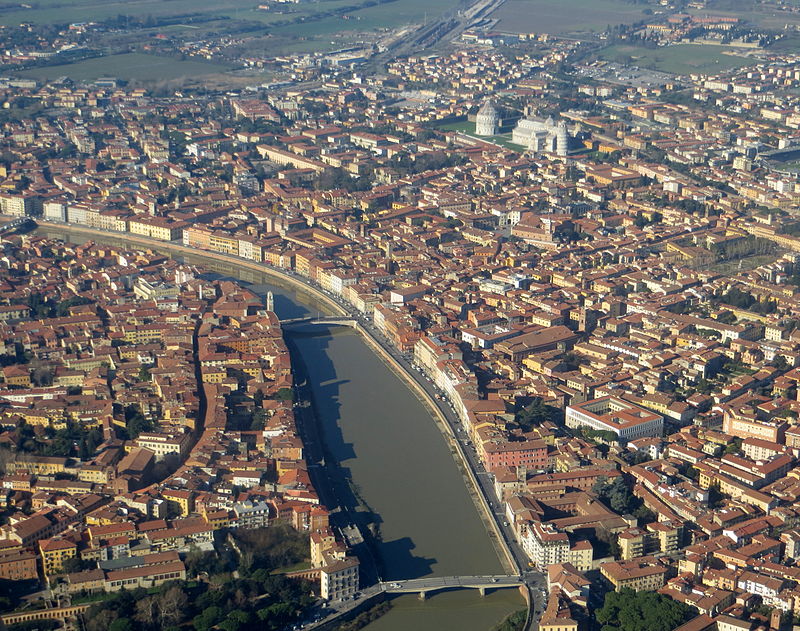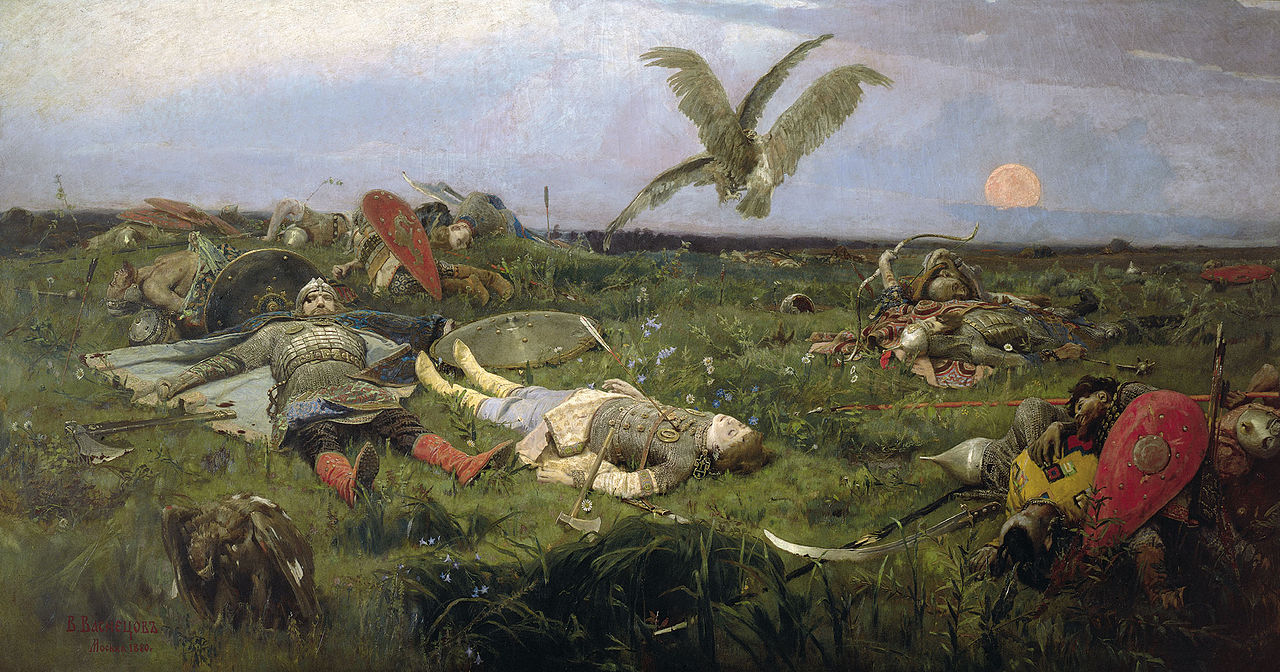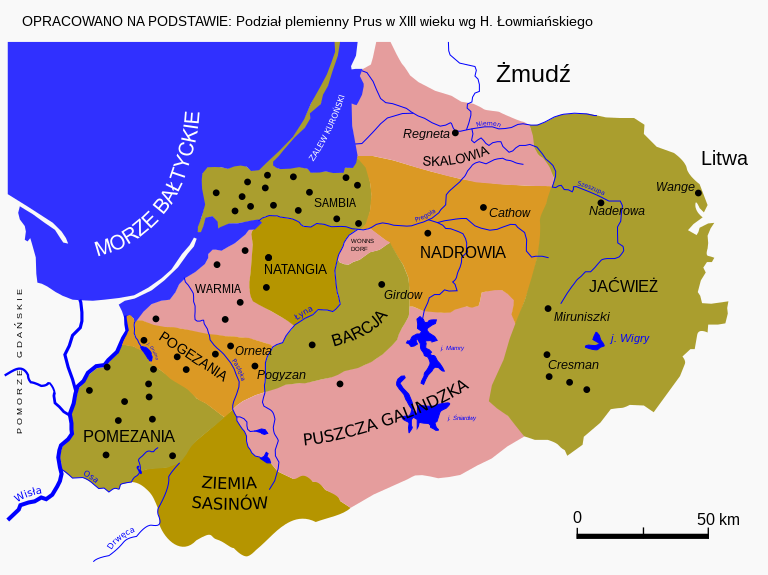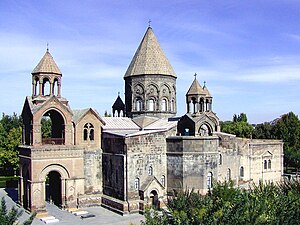Let´s take a look at the Indian Subcontinent, shall we? In the south we have the Buddhist kingdom of Ceylon ruled by the Lambakannas. Further north the Chola Empire is the dominant power of southeastern India, dominating the trade over the Bay of Bengal. The staunchly Hindu kingdom of the Cholas is the dominant bastion of Hindu revival in the south of the Subcontinent. The Cholas rule also over Hoysala, Andhra and smaller realms along the Malabar Coast. The entire Keralan coast by now is populated by St. Thomas Christians, a local Christian community dating their origins very early, since the time of the apostles. In terms of jurisdiction, they belong to the Church of the East, as the Metropolitan province of Beth Hinday, with the Metropolitan seated at Cranganore.
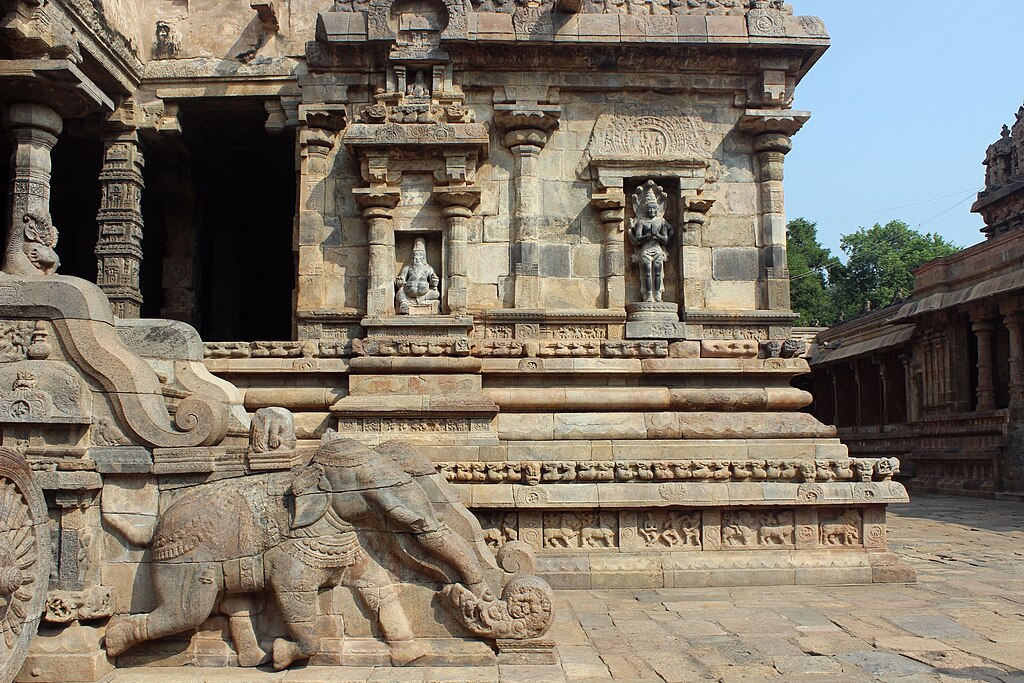
Airavateswara Temple: an exmaple of Chola architecture
The western Deccan plateau is still dominated by the Chalukyas. The Chalukyan dynasty are not that staunch Hindus, and have been patronizing all religions within their realm. They themselves appear to be very sympathetic to Jainism, which is still prevalent in the region; Buddhism has greatly declined in the region, to such extent that it cannot be seen on the map of the religions any more.
The northeastern Deccan plateau has always been described as more barbarous than other parts of the Subcontinent. These regions are still home not only to northern Dravidian peoples, but also to earlier Munda peoples speaking Austroasiatic languages (similar to those spoken by the Khmer). These peoples are collectively known as the Adivasi, and have been living in tribal societies outside the caste system.
The peoples of this area known as Gondwana, after the predominant Dravidian people of Gondi, would not practice Hinduism. Rather, their religion was Sarnaism, a very ancient religious tradition, whose places of cult were placed in hallowed groves.
The combined region of the Ganga and Brahmaputra Deltas was ruled by the Pala Empire. The Palas remained major patrons of Mahayana Buddhism. While Buddhism has been declining in almost every other part of the Subcontinent, in the Pala Empire, it prevailed. This was caused also by its urban nature: the regions further south were mostly rurally based, and Buddhism was very much connected to the urban civilization of the Gangetic plain.
Buddhism was also in decline in the lands of the neighbouring Gahadavala dynasty, controlling the Middle Ganges River. Its rulers, while mildly sympathetic towards Buddhism, would prefer Hinduism instead.
Northwestern India, places like Gujarat, Avanti and Rajputana also witness the predominance of Hinduism. Any remaining Buddhist communities are squeezed under the foot of the Himalaya Mountains. Jainism is also retreating southwards.

Trade routes in India. Source: A Fascinating Map of Medieval Trade Routes (note: all other images are mostly wikipedia, maps are mine)
The coastal regions of Gujarat were involved intensive westward trading. Particularly important were the ports of Diu, Cambay, Baruch and Tanah. Mazouni merchants were in frequent contact with this region; ultimately the cosmopolitan nature of the area resulted in a rather widespread conversion of some coastal communities to Mazdakism (1).
Further northwards we arrive into the region of Sindh. The area based along the Indus Delta had been exposed to frequent contact with Mazoun. Previous centres of Mazdakism have expanded substantially, as had the Nestorian community a little further south.
As for the Indus valley, it has been severely hit by the conquests of Zaku of Jaguda. Zaku of Jaguda was ruling in regions of Zabulistan and Kabulistan,that is on the eastern fringes of the Iranian Plateau. He was a devout Manichean and was prepared to invade the Indian Subcontinent. He did dedicate quite a lot of time to see where Alexander the Great has failed and prepared not to make the same errors. The traditions surrounding Alexander the Great in the region of Zabulistan and Kabulistan were very strong, and he was viewed as a very positive figure. The name "Sicandar" would be used not as a name, but rather as a title, similar to that of Caesar in the west.
Crossing the Khyber Pass into Peshawar, Zaku´s Turkic armies had followed the footsteps of many before them. The Shahi dynasty, originating in Kabul, was easily defeated by Zaku, allowing him to seized Peshawar and Multan.
Zaku of Jaguda managed to crush most of his enemies in northwestern India. Many cities were sacked, and the loot was taken to Jaguda. The worth of the loot was difficult to enumerate. Many especially Hindu and Jain temples were looted; Buddhist not so much. The treasures were concentrated in Jaguda, which would attract many scholars and poets. New colleges, caravan hotels and gardens were founded in the heart of the realm.
The western and northwestern parts of the Jagudid realm were lost to the Seljuqs, forcing the Jagudids to concentrate more on India. The effective border would be the (almost) impassable Hindu Kush. Many Manicheans from the Bavandid realm, now overrun by the Seljuks , would arrive in the Jagudid realm.
The Jagudids themselves had by this time thrown away any Turkic cultural traits, and greatly adopted Persianate culture. The heirs of Zaku of Jaguda would not focus that much upon conquests, but rather would seek to bring the word of Mani to the Subcontinent. Manichean clerics could build upon the pre-existing Buddhist traditions of Gandhara and Multan. Buddhism as mentioned was in decline in India at this time, as it had become detatched from the people.

Manicheanism has established itself in the Indus Valley
The conquerors sought to take advantage of this situation, use the already existing layer of Buddhist traditions, and present Manicheism as something new. These policies resulted in an even faster decline of Buddhism in Gandhara and Punjab; meanwhile Hindu temples were very often targeted and destroyed or sacked, be they in or outside of his realm (2).
Ultimately, the Helmand Valley, Kabulistan and Multan had become Manichean with a few generations. Buddhism continues to survive in the region in the less accessible mountainous regions. The region of Makran to the south of Zabulistan manages to remain a backwater; local Zuni beliefs are intertwined with Buddhism and Zoroastrianism to a greater part; the southern coastal areas around Gwadar, under Mazouni influence, have converted to Mazdakism.
Local tradition in Kashmir had it that Jesus had visited India in prior to his ministry, where he ought to have been instructed by Buddhist monks. Hints were found by critical later scholars, who found that Christian “innovations” to the Old Testament were very similar to Buddhism. While Manichean clerics did not comment much on the issue whether He visited Kashmir or not, this tradition also aided them in converting the people of the region. After all, the messages of Buddha, Zoroaster and Jesus were from the same source, remember (4).
Beyond the Himalayas, there is the Tibetan Plateau. It has been described by some as the Roof of the World, located beyond the Himalayas, bordered on its north by the Kun-Lun Mountains, separating it from the Tarim Basin. Interestingly enough, the Himalaya Mountains, the highest mountains of the world had been more often passed than the lower mountain ranges of the Tibetan Plateau.
This can be explained, that heir northern slopes descend again into the upper Brahmaputra and Indus valleys, which are home to major centres of Tibetan civilization, such as Lhasa or Leh. Indee, the two upper river valley had become two major cores of Tibetan culture: Guge and Ladakh on the Upper Indus, while Lhasa on the Brahmaputra.

A Tibetan Stupa at Ngawa, Tibet
The plateau had formerly been united by the Tibetan Empire until the 9th century. The 10th and 11th centuries are subsequently known in Tibetan historiography as the period of fragmentation. The 11th century is known as the Tibetan Renaissance, which I know nothing about, am too lazy to do research, and anyway it happened the same way as it did, didn´t it?
(1) The nature of the Mazdaki religion by this period has severely changed. More information about it will come when we start discussing Mazoun.
(2) Indeed, the Jagudids did have a Manichean worldview J
(3) There is an alleged tomb of Jesus at Rozabal, Srinagar, Kashmir
(4) Mani claims that Zoroaster, Buddha and Jesus all received the true message, which was summarized by him, of course. It reminds me Muhammad claiming succession to the Prophets and Jesus…

Airavateswara Temple: an exmaple of Chola architecture
The western Deccan plateau is still dominated by the Chalukyas. The Chalukyan dynasty are not that staunch Hindus, and have been patronizing all religions within their realm. They themselves appear to be very sympathetic to Jainism, which is still prevalent in the region; Buddhism has greatly declined in the region, to such extent that it cannot be seen on the map of the religions any more.
The northeastern Deccan plateau has always been described as more barbarous than other parts of the Subcontinent. These regions are still home not only to northern Dravidian peoples, but also to earlier Munda peoples speaking Austroasiatic languages (similar to those spoken by the Khmer). These peoples are collectively known as the Adivasi, and have been living in tribal societies outside the caste system.
The peoples of this area known as Gondwana, after the predominant Dravidian people of Gondi, would not practice Hinduism. Rather, their religion was Sarnaism, a very ancient religious tradition, whose places of cult were placed in hallowed groves.
The combined region of the Ganga and Brahmaputra Deltas was ruled by the Pala Empire. The Palas remained major patrons of Mahayana Buddhism. While Buddhism has been declining in almost every other part of the Subcontinent, in the Pala Empire, it prevailed. This was caused also by its urban nature: the regions further south were mostly rurally based, and Buddhism was very much connected to the urban civilization of the Gangetic plain.
Buddhism was also in decline in the lands of the neighbouring Gahadavala dynasty, controlling the Middle Ganges River. Its rulers, while mildly sympathetic towards Buddhism, would prefer Hinduism instead.
Northwestern India, places like Gujarat, Avanti and Rajputana also witness the predominance of Hinduism. Any remaining Buddhist communities are squeezed under the foot of the Himalaya Mountains. Jainism is also retreating southwards.
Trade routes in India. Source: A Fascinating Map of Medieval Trade Routes (note: all other images are mostly wikipedia, maps are mine)
The coastal regions of Gujarat were involved intensive westward trading. Particularly important were the ports of Diu, Cambay, Baruch and Tanah. Mazouni merchants were in frequent contact with this region; ultimately the cosmopolitan nature of the area resulted in a rather widespread conversion of some coastal communities to Mazdakism (1).
Further northwards we arrive into the region of Sindh. The area based along the Indus Delta had been exposed to frequent contact with Mazoun. Previous centres of Mazdakism have expanded substantially, as had the Nestorian community a little further south.
As for the Indus valley, it has been severely hit by the conquests of Zaku of Jaguda. Zaku of Jaguda was ruling in regions of Zabulistan and Kabulistan,that is on the eastern fringes of the Iranian Plateau. He was a devout Manichean and was prepared to invade the Indian Subcontinent. He did dedicate quite a lot of time to see where Alexander the Great has failed and prepared not to make the same errors. The traditions surrounding Alexander the Great in the region of Zabulistan and Kabulistan were very strong, and he was viewed as a very positive figure. The name "Sicandar" would be used not as a name, but rather as a title, similar to that of Caesar in the west.
Crossing the Khyber Pass into Peshawar, Zaku´s Turkic armies had followed the footsteps of many before them. The Shahi dynasty, originating in Kabul, was easily defeated by Zaku, allowing him to seized Peshawar and Multan.
Zaku of Jaguda managed to crush most of his enemies in northwestern India. Many cities were sacked, and the loot was taken to Jaguda. The worth of the loot was difficult to enumerate. Many especially Hindu and Jain temples were looted; Buddhist not so much. The treasures were concentrated in Jaguda, which would attract many scholars and poets. New colleges, caravan hotels and gardens were founded in the heart of the realm.
The western and northwestern parts of the Jagudid realm were lost to the Seljuqs, forcing the Jagudids to concentrate more on India. The effective border would be the (almost) impassable Hindu Kush. Many Manicheans from the Bavandid realm, now overrun by the Seljuks , would arrive in the Jagudid realm.
The Jagudids themselves had by this time thrown away any Turkic cultural traits, and greatly adopted Persianate culture. The heirs of Zaku of Jaguda would not focus that much upon conquests, but rather would seek to bring the word of Mani to the Subcontinent. Manichean clerics could build upon the pre-existing Buddhist traditions of Gandhara and Multan. Buddhism as mentioned was in decline in India at this time, as it had become detatched from the people.
Manicheanism has established itself in the Indus Valley
The conquerors sought to take advantage of this situation, use the already existing layer of Buddhist traditions, and present Manicheism as something new. These policies resulted in an even faster decline of Buddhism in Gandhara and Punjab; meanwhile Hindu temples were very often targeted and destroyed or sacked, be they in or outside of his realm (2).
Ultimately, the Helmand Valley, Kabulistan and Multan had become Manichean with a few generations. Buddhism continues to survive in the region in the less accessible mountainous regions. The region of Makran to the south of Zabulistan manages to remain a backwater; local Zuni beliefs are intertwined with Buddhism and Zoroastrianism to a greater part; the southern coastal areas around Gwadar, under Mazouni influence, have converted to Mazdakism.
Local tradition in Kashmir had it that Jesus had visited India in prior to his ministry, where he ought to have been instructed by Buddhist monks. Hints were found by critical later scholars, who found that Christian “innovations” to the Old Testament were very similar to Buddhism. While Manichean clerics did not comment much on the issue whether He visited Kashmir or not, this tradition also aided them in converting the people of the region. After all, the messages of Buddha, Zoroaster and Jesus were from the same source, remember (4).
Beyond the Himalayas, there is the Tibetan Plateau. It has been described by some as the Roof of the World, located beyond the Himalayas, bordered on its north by the Kun-Lun Mountains, separating it from the Tarim Basin. Interestingly enough, the Himalaya Mountains, the highest mountains of the world had been more often passed than the lower mountain ranges of the Tibetan Plateau.
This can be explained, that heir northern slopes descend again into the upper Brahmaputra and Indus valleys, which are home to major centres of Tibetan civilization, such as Lhasa or Leh. Indee, the two upper river valley had become two major cores of Tibetan culture: Guge and Ladakh on the Upper Indus, while Lhasa on the Brahmaputra.

A Tibetan Stupa at Ngawa, Tibet
The plateau had formerly been united by the Tibetan Empire until the 9th century. The 10th and 11th centuries are subsequently known in Tibetan historiography as the period of fragmentation. The 11th century is known as the Tibetan Renaissance, which I know nothing about, am too lazy to do research, and anyway it happened the same way as it did, didn´t it?
(1) The nature of the Mazdaki religion by this period has severely changed. More information about it will come when we start discussing Mazoun.
(2) Indeed, the Jagudids did have a Manichean worldview J
(3) There is an alleged tomb of Jesus at Rozabal, Srinagar, Kashmir
(4) Mani claims that Zoroaster, Buddha and Jesus all received the true message, which was summarized by him, of course. It reminds me Muhammad claiming succession to the Prophets and Jesus…
Last edited:










